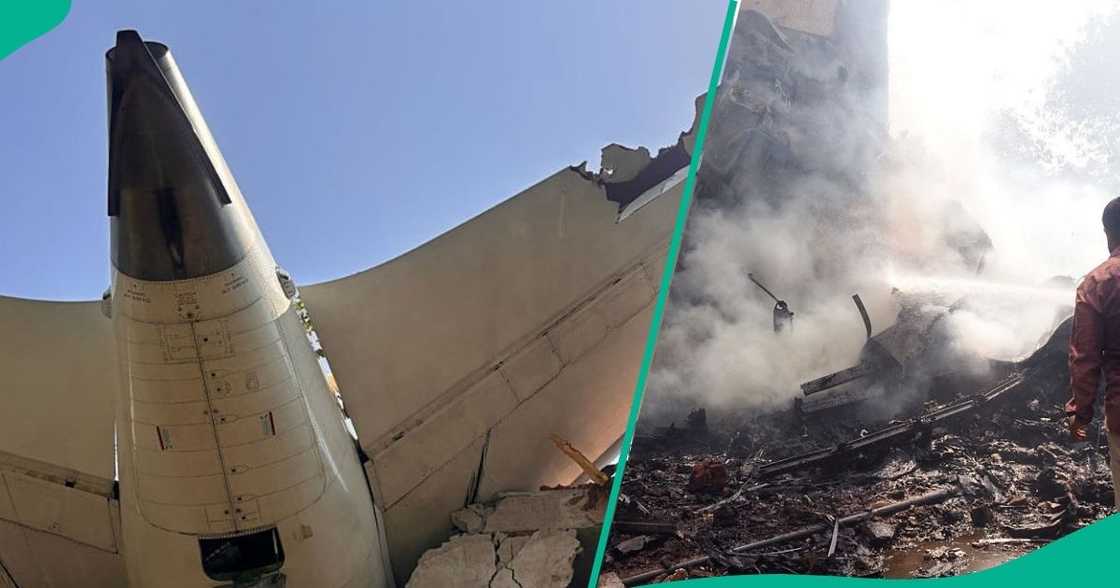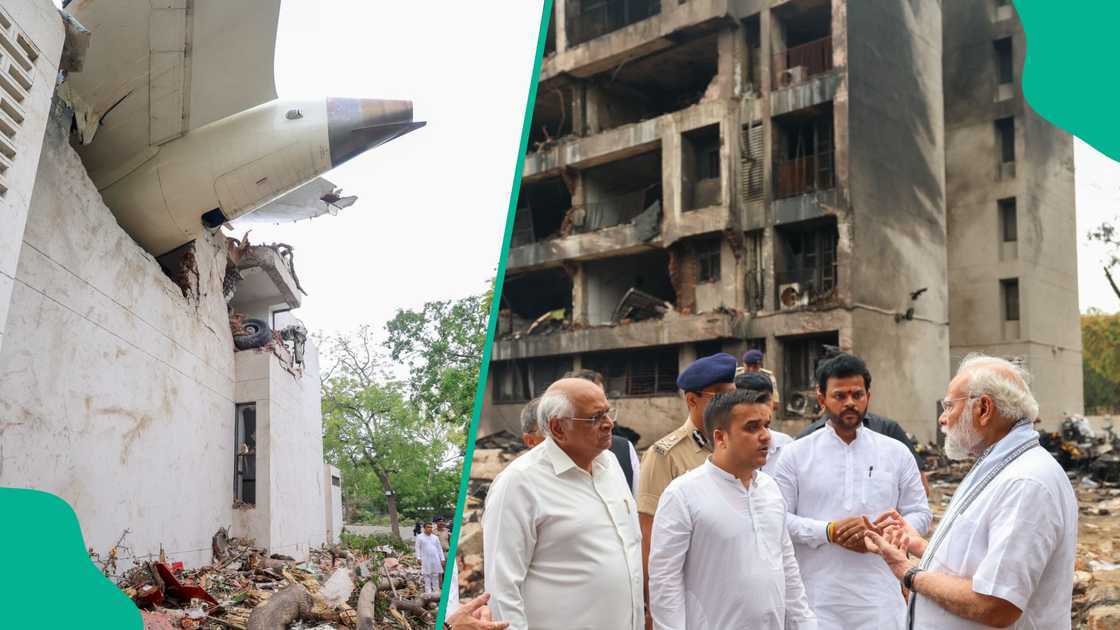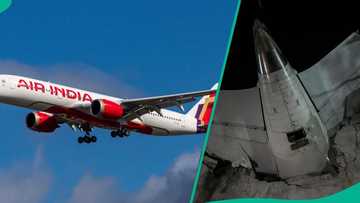Air India Plane Crash: What Does a Mayday Call Mean?
- Air India Flight 171 was airborne for less than 40 seconds before it plunged into a densely-populated neighbourhood in Ahmedabad
- Investigators now face the grim task of sifting through the wreckage and decoding the cockpit voice and flight data recorders of the Boeing 787 Dreamliner to piece together what went catastrophically wrong
- Against the backdrop of the London-bound plane tragedy, Legit.ng explains the actual meaning of the aviation term ‘Mayday'
Legit.ng journalist, Ridwan Adeola Yusuf, has over 9 years of experience covering global affairs.
Ahmedabad, India - A tragic Air India AI171 crash near Ahmedabad brought a chilling phrase to the world’s attention.
As reported by the Guardian UK, “Mayday, mayday,” was the final radio message sent by Sumeet Sabharwal, the pilot of the Air India 171 flight bound for London, moments before it crashed to the ground, killing more than 270 people.

Source: Getty Images
What does “Mayday” really mean, and why do pilots use it? Legit.ng explains the critical importance of the Mayday call.
May Day in airlines
In aviation, “Mayday” is the most urgent international distress signal, reserved for life-threatening emergencies, like catastrophic failures or sudden loss of control, when immediate help is needed.
The word comes from the French ‘m’aider’ (“help me”) and is recognised worldwide.
The credit for its implementation goes to Frederick Stanley Mockford, a senior radio officer at London’s Croydon Airport. The term was chosen because of its distinctive sound and clarity, making it easily recognizable over radio transmissions.
When a pilot says “Mayday” three times, all air traffic control resources instantly focus on the distressed flight, launching rescue and emergency response.
Mayday is not for minor issues like turbulence or single-engine failure in a twin-engine plane.
Key aspects of the Mayday distress call
- Emergency situations: The declaration of "Mayday" is reserved for situations where the safety of the aircraft, vessel, crew, or passengers is severely compromised, necessitating immediate action to prevent further escalation or potential loss of life. Such scenarios may include engine failures, severe weather encounters, structural malfunctions, or medical emergencies aboard the aircraft or vessel.
- Universal recognition: "Mayday" is universally acknowledged as the distress signal of utmost urgency across the aviation and maritime domains. Its standardized usage ensures a swift and effective response from relevant authorities and nearby vessels or aircraft in an emergency.
- Priority response: Upon receiving a "Mayday" distress call, air traffic controllers, search and rescue (SAR) teams, and other relevant authorities prioritise the coordination of rescue efforts and provide necessary support to the distressed aircraft or vessel. A prompt and coordinated response is imperative to mitigate risks and ensure the safety of those involved.
- Radio communication: The distress call of "Mayday" is transmitted via radio communication on dedicated emergency frequencies, enabling pilots or mariners to alert air traffic control (ATC), maritime authorities, or nearby vessels of the urgent situation. Using standardised distress procedures ensures clarity and comprehension amidst the chaos of an emergency.

Source: Twitter
Read more on the Air India disaster:
- Man who was in the same hospital as Air India crash survivor shares heartbreaking question he asked him
- Air India: Man who looked closely at plane's seats shares worrisome observation he made
- Air India: Doctor who first treated lone survivor Ramesh shares observation he made about him
Air India CEO speaks
Earlier, Legit.ng reported that the chief executive officer (CEO) of Air India, Campbell Wilson, shared new insights about the pilots of the crashed Boeing Dreamliner.
In a letter to the victims' families, Wilson stated that Captain Sabharwal was highly-experienced.
Wilson disclosed that the late captain logged over 10,000 hours of flying, and his co-pilot had 3400 hours of flying experience.
Source: Legit.ng




